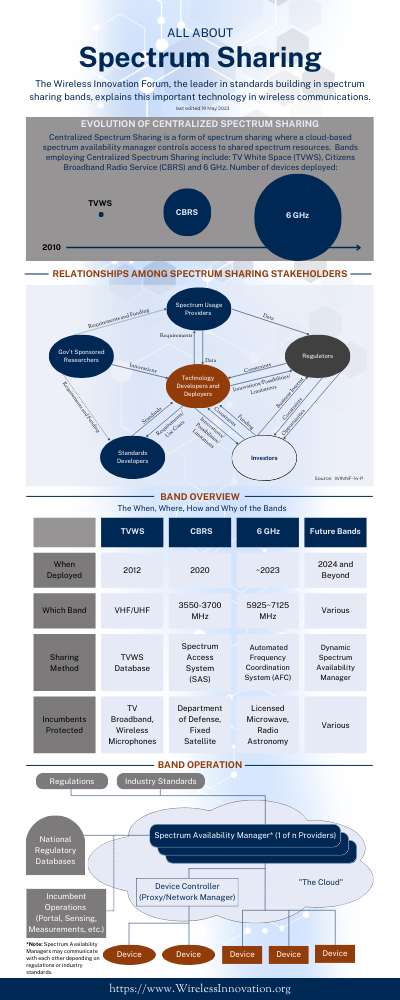- Home
- Knowledge Center
- Reports, Recommendations and Specifications
- Information Documents
- All About Spectrum Sharing Infographic
- Free Webinars
- Tech Talks
- Setting the Standard Video Blog
- Beyond the Radio Dial Video Blog
- Conference Proceedings
- Workshop Proceedings
- Springer Journals
- Market Studies
- What is the SCA?
- Issue Submissions
- Reference Implementations
- What is SDR?
- What are CR and DSA?
- About Us
- Events
- News
- Projects & Committees
- Members
- Join the Forum
Wireless Innovation Forum Top Ten Most Wanted InnovationsInnovation #8: Efficient Techniques to Minimize Power Amplifier Spectral Regrowth in Non-contiguous Spectral Environment8.1 Executive SummaryThis innovation references techniques including algorithms, software, hardware, and/or mixed techniques that significantly reduce spectral re-growth when multiple transmit signals operating in non-contiguous allocations, are passed through a non-ideal transmitter. All transmitter topologies exhibit non-linear response in varying degrees. Discontiguous placement of carriers exasperates the problem as Out of Band Emissions (OOBE) requirements must be met along multiple boundaries to insure spectrum purity. This innovation addresses the need for improved techniques implementation of RF amplifier systems that will allow multiple fallow portions of spectrum to be virtually utilized as a single, continuous channel. 8.2 ApplicationIn many secondary spectrum deployment scenarios, it will be difficult to locate contiguous wideband spectrum due to the interspersed nature of primary users. Thus to achieve sufficient communications bandwidth for high data rate applications, it will be necessary to combine together multiple smaller pieces of contiguous spectrum which would ideally be transmitted from a single transmitter. In such a scenario, it is vital that the primary user signals are protected from interference. 8.3 DescriptionSimply filtering or nulling the transmitted signal energy in the intermediate subbands at baseband will not provide sufficient protection to the primary users due to transmitter nonlinearities leading to spectral regrowth in the primary users’ spectrum of operation. Likewise, while narrower bandwidth signals can be used that eliminate the possibility of spectral overlap, this narrow bandwidth is often insufficient to carry the user payload. Similarly, significantly increasing guardbands can improve primary user protection, but this is highly inefficient use of spectrum. Ideally techniques should mitigate this spectral regrowth in unused bands in transmissions over non-contiguous spectrum without increasing guardbands to achieve suppression that yields at least -70 dBm signal level in protected bands. 8.4 QualifiersSingle band (e.g., TV bands) is acceptable. Multiple transceiver chains to multiple antennas are not desirable for this topic. Technology of interest may consist of software, hardware, or hybrid solutions. Many different techniques have been proposed, including predistortion and subcarrier manipulation techniques, but these techniques individually normally achieve suppression at levels below the 70 dB required in many allocations. Furthermore, while regulatory requirements may currently be met with existing solutions, solutions should anticipate these requirements to become more stringent in the future. It is clear that current masks do not fully protect adjacent channel services; one such argument is put forward by Iridium warning of potential interference from adjacent allocations used by Terrestrial L-Band LTE systems. Similar potential issues will come to light in other bands such as 3.7-4.2GHz and 6-7GHz. Furthermore, the potential of zero-guard-band allocations for broadband use adjacent to other services reinforces the need for stricter OOBE requirements. Continued development of linearization techniques (pre-distortion and feedback to name 2), amplifiers with increased power efficiency and reduced spectral re-growth, along with wider supported channel bandwidth and frequency range are necessary. Regulatory standards do not, and cannot, long term, remain fixed and many current PA designs simply meet current requirements with little margin. |



